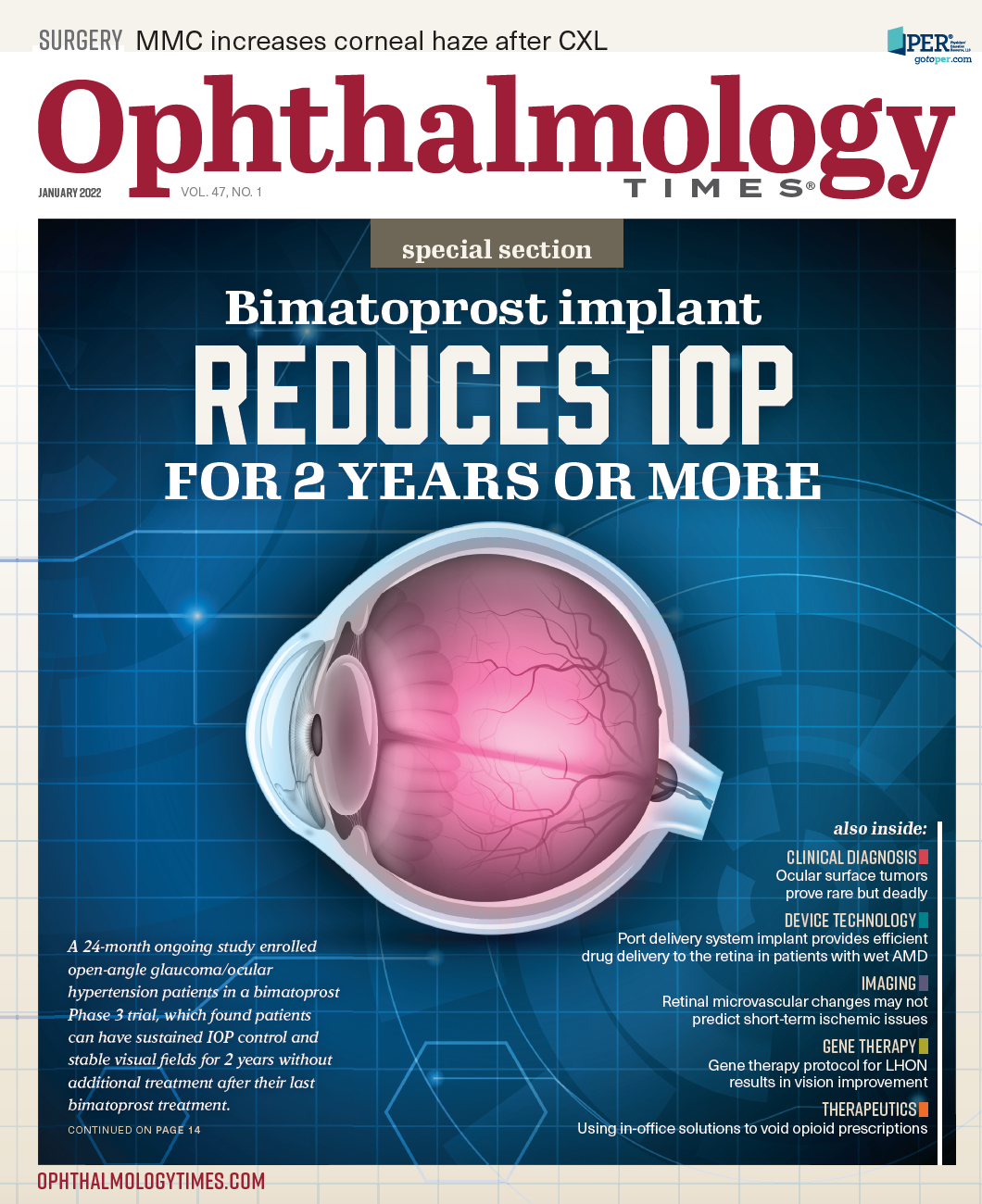Publication
Article
Digital Edition
MMC increases corneal haze after CXL
Author(s):
The application of mitomycin C after corneal cross-linking does not prevent development of corneal haze after the procedure, but it does contribute to development of more corneal haze.

Reviewed by Shady T. Awwad, MD
The application of mitomycin C (MMC) after corneal cross-linking (CXL) does not prevent development of corneal haze after the procedure, but it does contribute to development of more corneal haze, according to Shady T. Awwad, MD, professor of clinical ophthalmology at the American University of Beirut Medical Center, in Lebanon.
The rationale for applying MMC after CXL has been the inhibition of incoming keratocytes following the procedure. However, abundant cytokine release from a surge in apoptosis due to the combination of CXL and MMC seems to be responsible for the development of more haze.
Awwad and colleagues reached this conclusion based on the results of a retrospective, single-center study of 72 patients (87 eyes with keratoconus) who underwent CXL from June 2013 to January 2015 at the American University of Beirut Medical Center. The same surgeon performed all CXL procedures using the Dresden protocol. MMC was applied at the end of each CXL procedure as part of the routine protocol from February 2015 to December 2015.
The results obtained from the patients treated with CXL alone was compared with the patients who underwent CXL and application of MMC. All patients were followed for 1 year and underwent periodic examinations during that period. The clinicians used Cirrus high-definition optical coherence tomography (Cirrus HD-OCT; Carl Zeiss Meditec AG) to monitor the stromal haze. Optical coherence tomography (OCT) sections of stromal haze were analyzed using a patented machine learning algorithm, developed and published by the authors, to automatically detect and objectively stage areas of stromal haze. The visual results were slightly better without MMC—but not significantly so—and the topographic results with/without MMC were significantly better compared with preoperatively.
According to Awwad, the overall anterior stromal haze was significantly (P < .05 for all comparisons) greater at all postoperative time points (ie, at 1, 3, 6, and 12 months when MMC was applied compared with when CXL alone was performed). The mean gamma-decoded anterior stromal reflectivity on OCT scans was 26.0 ± 15.0 vs 14.8 ± 04.7 gray scale units at 1 month and 18.4 ± 9.3 vs 13.9 vs 4.4 at 12 months.
Analysis of the middle stromal reflectivity indicated that haze was significantly greater at the 12 month time point but did not reach significance at any time in the posterior stroma. The reflectivity of the anterior stromal haze area (which is selected by the software as displaying more haze than the surrounding area), calculated as the mean pixel intensity in a particular corneal region, was 33.1 ± 16.6 vs 23.2 ± 05.9 at 1 month and 27.1 ± 12.8 vs 20.6 ± 07.9 at 12 months for the CXL with MMC and the CXL groups, respectively (P < .05 for all comparisons).
Awwad concluded by raising another area for consideration, notably the implications of this study on simultaneous photorefractive keratectomy plus CXL candidates, where the value and potential risks of MMC should be critically appraised.
Shady T. Awwad, MD
E: sawwad@gmail.com
Awwad has no financial disclosures related to this content.
Newsletter
Don’t miss out—get Ophthalmology Times updates on the latest clinical advancements and expert interviews, straight to your inbox.





